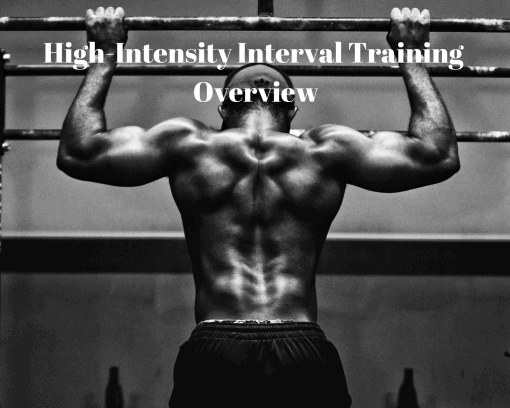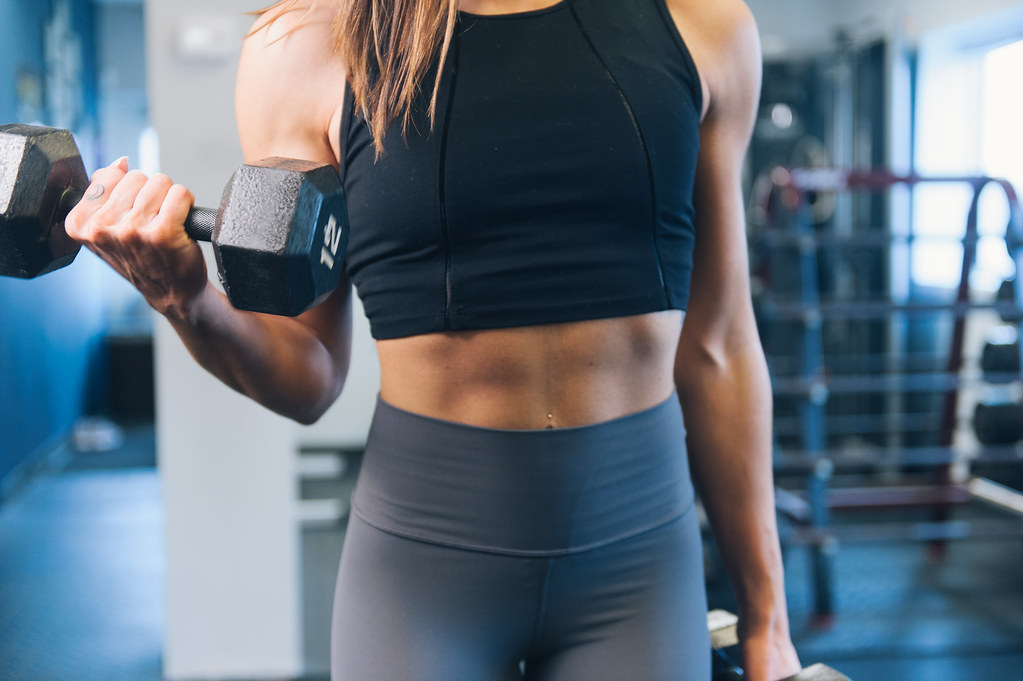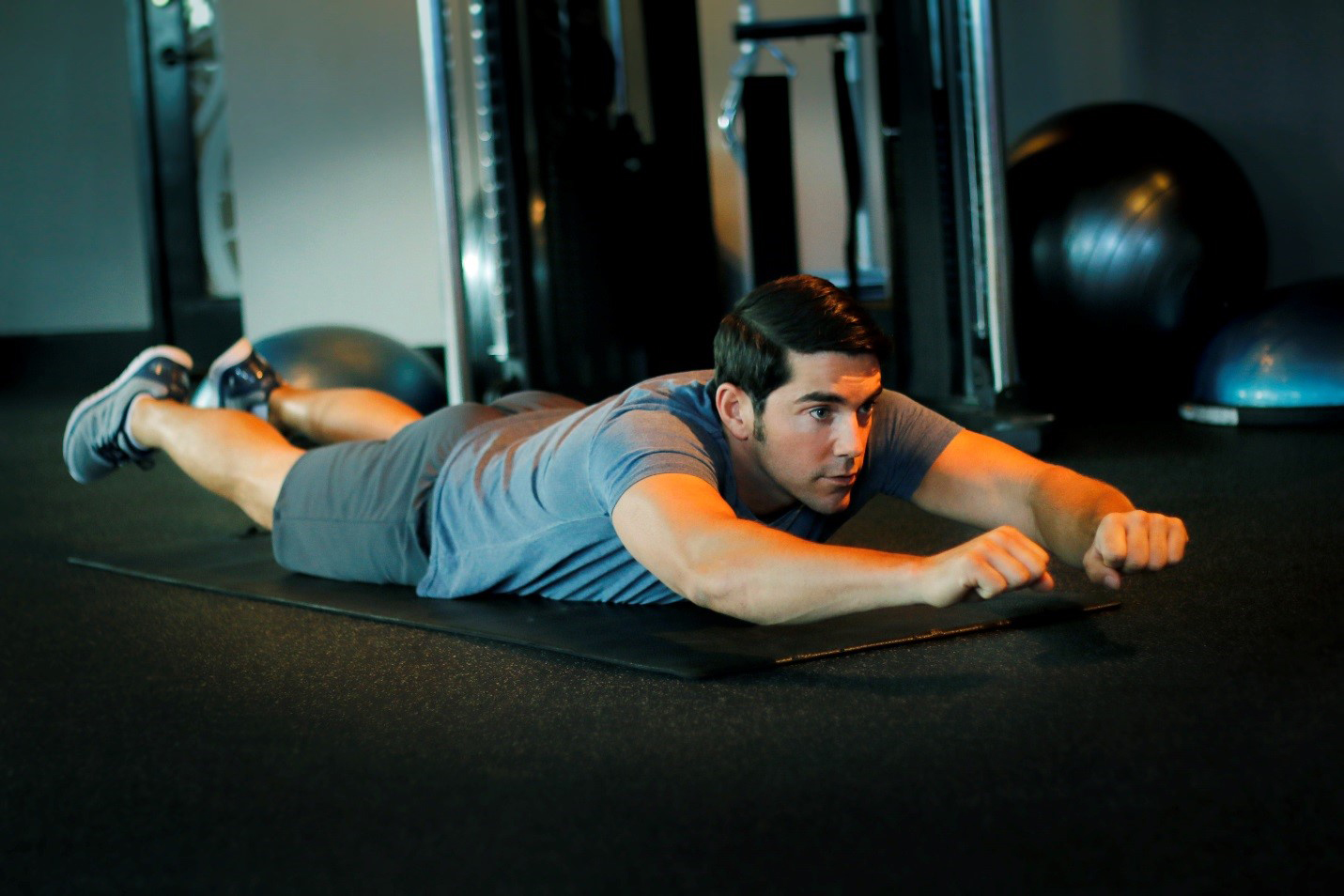More and more individuals who want to lose weight, be fit and change their whole body composition, tend to focus on doing HIIT workouts as a time-saving and more effective alternative to the typical cardio approach. However, not doing these exercises properly or overdoing them might injure you. Therefore it is important to know certain things about HIIT. For instance, when’s the best time to do HIIT? You will find the answer to this question and more in today’s post.
Topic Contents
What Is HIIT?
The acronym HIIT stands for “high-intensity interval training.” In other words, HIIT is the type of workout during which you engage in short yet intense exercises but alternate them with lower-intensity routines or even brief periods of rest. The simplest example I can think of, off the top of my head, is the one in which a person sprints at high speed for 20-30 seconds and then walks for the same amount of time.
Usually, most HIIT routines involve specific workout and rest periods. Also, you will have to complete a certain number of rounds. Some people choose the 1:1 ratio (for instance, 30 seconds of workout and 30 seconds of rest) while others are more into the 2:1 ratio (for every 20 seconds of intense physical exercise, you must rest for 10 seconds).
Why Should You Perform HIIT? – Main Benefits
- HIIT is much more effective and has a greater impact on your body because, during these intense workouts, you will exercise without oxygen (“anaerobically”). This further leads to a body process that’s called EPOC which translates into excess post-training oxygen consumption or what most of you know as the muscle burn effect that appears after a tremendous physical routine. It has a positive domino effect because all these processes will help your organism burn more fat and more calories in a shorter period
- After a HIIT workout, one’s metabolic rate remains at a high level for hours. This means that your body will keep consuming calories even after you’re done working out
- It speeds up the process of fat burn and lowers your organism’s tendency to store fat
- By doing HIIT, you can also gain muscle mass, but it is true, however, that some people build more muscles than others with HIIT exercises
- HIIT will improve the way your organism consumes oxygen
- It might lower both blood pressure and heart rate. These two factors are essential in cases of overweight individuals
- HIIT might also lower your blood sugar levels
- Performing HIIT will help you increase your endurance and use your energy in a useful manner
- It is very affordable because you don’t need any equipment or accessories to do HIIT exercises
- With HIIT, you will only lose fat while preserving your muscle mass
- It is a highly versatile type of physical activity because you can customize your workouts the way you want
- Supports a healthy heart and keeps you motivated. Each HIIT workout is a real challenge, and once you complete it, you will be proud of yourself and feel good about what you have accomplished
When’s the Best Time to Do HIIT?
I bet that you have heard plenty of opinions related to when you should do HIIT. Most people tend to think that doing HIIT first thing in the morning will kick-start their metabolism and release endorphins. On the other hand, several studies have shown that exercising intensely in the morning might not be very safe for your health. The research concluded that the best time to work out is in the afternoon. Still, some people continue to train in the first part of the day.
To be honest, it is pretty complicated to come up with a generally valid time that’s perfect for HIIT routines. The ideal timing might vary from one person to the other, depending on that individual’s daily schedule, internal clock, and even certain external factors such as the weather in case one likes to train outside.
One thing’s for sure! You should never mix HIIT exercises with other types of workouts. In other words, I don’t recommend you to mix HIIT days with weight-training days. These combinations are a mistake and can really affect your overall performance and even lead to injuries.
What’s even more interesting and it might be useful for you if you are truly into doing HIIT is the fact that, according to some fitness experts, people should engage in HIIT workouts two times per day if they want to achieve their desired results. To start your day correctly, you should do a short session of HIIT cardio. This should be performed in the morning, right after you have eaten a light breakfast. Doing this type of routine will help your organism burn calories throughout the day.
The Best Time to Perform HIIT Exercises – Conclusion
So, as you can see, there are plenty of different answers regarding the perfect time to do HIIT. Some people say the ideal moment of the day is in the morning while others tend to choose evenings for this type of physical activity. I personally believe that no one should perform intense workouts in the morning, especially on an empty stomach. If you choose to exercise early, at least make sure to eat a light meal first. I don’t know about you, but I don’t have the right amount of energy to do HIIT too early.
To conclude with:
- If you want to lose weight and burn a lot of fat, you should try training before breakfast but make sure to avoid routines that are too intense;
- If you want to increase your overall athletic performance simply, it is best to eat something first and finish the workout later on, ideally in the evening when your body is properly fueled with energy and nutrients.
How Long Should a HIIT Workout Last?
This is a tricky yet straightforward question. On the one hand, there are people who think they only need 7-10 minutes to complete a HIIT session. On the other hand, some individuals are willing to engage in HIIT workouts that last up to one full hour, which, to be honest, for me, it is a bit mind-blowing. So, there’s a large variance when it comes to HIIT duration, but that’s still an understatement.
What you must do is determine the ideal HIIT duration that suits your needs and helps you accomplish your fitness goals. However, to do that, you need a bit of experience and knowledge in this area. For me, the optimal timeframe is 20 to 30 minutes per routine. If you complete a half-hour HIIT session, but you still feel like you can go even more that might mean you didn’t work hard enough. Also, if you work less than 15 minutes, the HIIT training won’t deliver meaningful results.
Don’t get me wrong! Any type of activity and any duration are better than none. For instance, a few minutes of exercise is always a better choice than lying on the couch watching TV. Still, the response to the question of what the best duration of HIIT training is, I would say it somewhere between 20 and 30 minutes.
An Example of a HIIT Workout
A common 20-minute HIIT workout for beginners would look like this. Do 3 rounds of the entire sequence of the following exercises: push-ups, butt kicks, squats, side lunges, and triceps dips. Don’t forget to alternate 40 seconds of working out with 15 seconds of rest.
Pros and Cons of HIIT Workouts
Advantages
- This type of workout is highly convenient – you can do it anywhere you want: in the park, in the privacy of your home, at the gym, etc.
- HIIT represents an effective way to use your valuable time
- HIIT’s benefits are significantly greater than the ones provided by longer yet low-intensity training. It helps you get ripped, and it allows you to gain both cardiovascular and muscular strength in short routines of only 20 minutes per session
- You will burn fatter and your metabolic rate will increase
- HIIT will add variety to your workout routines
- It improves insulin sensitivity
Disadvantages
- Unlike a standard or steady cardio workout, HIIT comes with higher risks of injuries. High-intensity routines might make your muscles tissue to break which can further lead to serious health conditions like kidney damage
- HIIT is not a suitable workout for beginners. In fact, HIIT is not meant to be performed by anybody, including novice exercisers. It involves a lot of stamina and endurance as well as a full control of your body
- This type of workout can lead to certain side effects like intense muscle burning and even nausea
- Because HIIT exercises are so intense and demanding, there’s a potential risk of heart and joint problems
- It might cause dizziness
How to Do HIIT the Right Way
Step 1 – Ease in Gradually
Before moving on to HIIT, you should already be familiar with other sorts of physical activities such as cardio workouts, aerobic, fitness, etc. Starting from these, you can add intervals while also increasing the intensity of your training. So, make sure to increase both intensity and frequency but do this over time.
Step 2 – Choose Workouts You Enjoy Performing
For example, I simply can’t stand jogging, let alone running. So, for me, HIIT running intervals are definitely out of the question. Even if I would try to do this type of HIIT workout, I am certain I wouldn’t last much until deciding to quit. So, if you want to do a kind of high-intensity training that suits your preferences but also one that’s effective you must follow these two rules:
- Do exercises that will engage larger muscle groups such as your legs. This will lead to an increased heart rate, and the workout will become more effective
- Choose HIIT exercises during which you have complete control over your body. You should always be able to speed up or slow down whenever you want
Step 3 – Don’t Let Your Gym Leg Day Interfere with HIIT Sessions
It is not recommended to engage in HIIT training the next day after a sustained leg workout at the gym. Overtraining is not good, and it can even be harmful. Plus, you won’t be able to reach your full potential during the workout. This kind of demanding professional athletes should only do training routine.
Step 4 – Fuel Up Your Body
Not eating or fueling up before a HIIT routine is simply wrong and it can have serious long-term consequences. HIIT sessions, just like weightlifting, must be treated in a different way than regular gym workouts. Hydrate yourself properly and consume a light meal.
Step 5 – Listen to What Your Body Says
Don’t push too hard, especially if you feel like your body is fatigued. Also, you could do some low-intensity exercises when you feel a bit off. Once you progress and your body adjusts to HIIT-related stress, your training will become more efficient.
Most Common Mistakes of HIIT Workouts
- Skipping the warm-up part – when it comes to a healthy and correct workout, both warm-ups and cool-downs play an important role. The warm-up part prepares your body for an intense and sustained workout while the cool-down part helps your body regain its resting parameters. Not following these steps might lead to severe injuries, pains, and other issues
- Not increasing your workout’s intensity (in a gradual manner) – for HIIT to actually work, you need to follow certain rules such as implementing intense routines and intervals. According to fitness experts, if you don’t increase your intensity a bit with every additional HIIT routine, then you’re not really performing HIIT
- Not alternating high-intensity exercises with periods of rest – unfortunately, many people perform high-intensity training without taking the breaks that their body needs so much. Not resting will mess up with your entire workout. To avoid burnout, you must always alternative the exercises with a couple of seconds of break
- Doing HIIT way too often – no, seriously now! You should take a break from time to time. Overdoing HIIT will only diminish its benefits and even cause burnout, exhaustion, and injuries. So, give your body some time to recover
- Not adjusting the intensity in a proper manner – HIIT, as the name tells it, must be done hard and intense. Unfortunately, not all people are capable of working out at such a high-intensity level, so it is best to start with general fitness workouts and once your body is ready and strong to move up to HIIT
Still, probably the worst mistake of all is the one of not doing the workouts you love. When you truly enjoy what you’re doing, your progress will be bigger, and you will achieve results a lot easier and in a more pleasant way.
Frequently Asked Questions: FAQs
How Many Days A Week Should You Do HIIT?
If your goal is to tone up and lose some weight, with the right diet, you will see great results with just two or three times a week of HIIT. It is important to consider taking 24 hours rest between every session, so your body can recover.
Does HIIT Increase Metabolism?
HIIT exercises do, indeed, boost your metabolic rate even after you’re done with your workout. And besides what anyone may think, this High-Intensity Interval Training will not leave you drained after your routine, but instead increase your energy.
What Are The Best HIIT Exercises?
Just 10 minutes of HIIT, will give you some great results if you know how to take advantage of it. Turn it into an overall full-body routine by doing Lateral Lunges with Hops, Hand-Release Push-Ups, Mountain Climbers, and Star Jumps.
Wrapping It Up
HIIT training can be very good for your body, and it often provides great results. However, you must know the proper way to perform these workouts. Also, you need to know when the best time to do HIIT is. Some say it is in the morning while others opt for evening sessions. Either way, don’t forget to always listen to your body and its internal clock.
Recommended Reads
- 5 Best 7 Minute Workout Apps Which Actually Work
- When Is the Best Time to Have Your Protein Supplement?
- Top 7 Best Bodyweight Training Books
- How to Find the Best Workout: A Guide to Maximize Your Efforts
Alt Protein Team is a team of professionals and enthusiasts committed to bringing you the most up-to-date information on alternative protein, health and wellness, workouts, and all things health-related. We’ve reviewed a lot of products and services so you don’t have to guess when you spend your hard-earned money on them. Whether you want to shed some pounds, build lean muscle or bulk, we can help you figure out what you need to do and what you need to have to achieve your goals.












